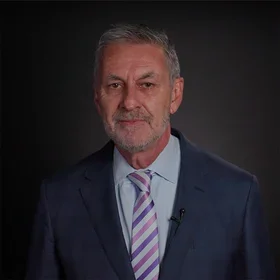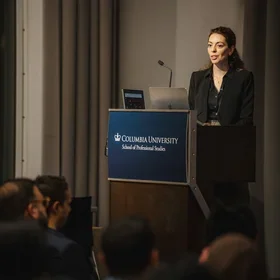In November 2022, more than 35,000 people participated in the 27th Conference of the Parties to the United Nations Framework Convention on Climate Change (COP27), which took place in Sharm el-Sheikh. Bob Percopo, lecturer for the Role of Finance in Insurance and advisor to members of the House and Senate Energy Committees, shares his perspective in the following opinion.
Another worldwide climate session has come and gone, and the only change has been the location. One should ponder—what with all the intelligent life in the world and the dire media hype about climate change—why no significant, real corrective action has been taken. With all the promised actions represented by action pledges, not a single goal has been met. Why is this happening?
United Nations Secretary-General Antonio Guterres concluded that the world was “on a highway to climate hell with our foot on the accelerator.” Interesting comment given that the UN is spearheading these conferences. Comments like this exacerbated the distrust between developing and developed countries that has plagued the UN climate process for years. And it is very much in line with the UN’s redistribution-of-wealth mantra. Perhaps the climate issue is so important that it should be dealt with as a stand-alone issue rather than being tied into any other topics.
Is the world heading for a cataclysmic event or not? Are we heading off on a fool’s errand? Will we survive climate change, and are the dire headlines simply media hype to stay relevant rather than a true depiction of where we are today?
I teach a graduate school course at Columbia University toward an Insurance Management master’s degree. This year I changed my midterm project with a concerted effort to develop insight into climate change to prepare students for a subsequent exercise in applying financial concepts to the innovation of insurance solutions. This was a group project, focusing on true objective research. On the first day, I divided the students into three groups and tasked them with (1) proving the major cause of climate change is nonhuman activities; (2) proving humans were the major cause; and (3) determining solutions to mitigate the problems caused by climate change. In my mind, the last group had the most important area of focus, since it deals with the here and now.
The exercise was not some Machiavellian plot to drive students to drink—they are fairly well versed in that activity—but rather to take them out of their comfort zone, isolate them from media hype and other people’s opinions presented as fact. The goal was to get them to use a well-formulated process that starts with a hypothesis and, through in-depth research, leads to a rational conclusion.
All three groups did an outstanding job. In my opinion, each showed an ability to think through a hypothesis by objective research and draw a reasoned conclusion. If the topic is truly researched without the artifice of a truncated time line, the result would lead to a vastly different outcome. In today’s world we are trying to hold temperature increase to 1.5 degrees; however, before humans walked the Earth, the planet suffered heat waves of 15 degrees followed by 15-degree drops leading to an ice age. Carbon dioxide levels were measured at 2,000 to 4,000 parts per million (ppm). Now, based on metrics that start from the Industrial Revolution, we are frantically trying to limit CO2 levels to below 450 ppm. At the start of the Industrial Revolution, carbon was at 106 ppm, and now we are at 418.
Some students’ research revealed other climate change factors:
- The evidence clearly shows that the Earth goes through periods of extreme warming and cooling. These changes in temperature are correlated to the amount of carbon dioxide (CO2) in the Earth’s atmosphere (along with other ancillary factors such as the intensity of the sunlight). Sources of the amount of carbon in the atmosphere are both non-human-created (the major sources) and human-created (to a lesser extent). The concentration of carbon dioxide in Earth’s atmosphere is currently 418 parts per million (ppm). But 500 million years ago, atmospheric CO2 concentrations were between 3,000 and 9,000 ppm. However, the average temperature wasn’t much more than 10 degrees above today’s temperatures.
Why? Because of other contributing factors, including lower intensity of emitted sunlight and a different planetary orbital cycle.
- Carbon dioxide is added to the atmosphere naturally when organisms die and decompose. forest fires occur, or volcanoes erupt. CO2 is also added to the atmosphere through human activities (such as the burning of fossil fuels). However, water vapor is by far the most prevalent greenhouse gas, making up ~98% of the greenhouse effect. CO2 is a relatively weak greenhouse gas and constitutes only 0.04% of the atmosphere. Approximately 97% of CO2 is produced by nature, not mankind. Volcanoes, forest fires, fallen and decaying leaves, tectonic plate shifts, even insects and bacteria produce CO2 as well as methane gas (another greenhouse gas). Natural wetlands emit more greenhouse gases than all human activities combined. If we could eliminate all human use of fossil fuels, 96% of the greenhouse effect would remain, because of water vapor.
- Agriculture’s contribution to total greenhouse gases is about 78% of all greenhouse gases entering the atmosphere.
Are we at a crossroads where we can either destroy the Earth by feeding an ever-growing population or starve the population? Since there is a big push to move from animal-based to plant-based protein, in addition to there being cultural objections forcing more into plant-based protein, more cultivation of land will lead to more carbon dioxide.
Some experts argue that current warming trends are caused by the amount of carbon dioxide emitted into the atmosphere from human activity. Our enormous appetite for progress (e.g., carbon-emitting vehicles, cattle ranches, private jets) has undoubtedly contributed to the problem. But the evidence shows that despite human activity, trends in global warming may be the result of the Earth’s natural roller-coaster ride of temperature activity, changes in the intensity of sunlight, alterations in the planet’s orbit, and volcanic and seismic activity, including tectonic plate shifts, which were identified by one of the student groups.
One wonders why all the focus to date from the United Nations and various governments has been on carbon dioxide. CO2 is a minimal factor based on a lot of the objective research. Might it be the sheer capital domiciled within the fossil fuels industry, including the major oil-producing countries like Saudi Arabia and the OECD countries? A significant amount of time at COP27 was spent discussing how some countries should pay those countries that will not or cannot meet CO2-reduction goals. What better way to redistribute wealth than to access these piggy banks?
One positive direction at COP27 was a push by poorer countries for the creation of a multilateral funding mechanism to fund climate damage remediation. Developed countries wanted to delay the discussions until 2024 or create types of insurance to cover the costs. However, the devil will be in the details. New pledges of about 340 million euros were agreed to. This pales by comparison to Holland’s estimated climate damage mitigation costs, which are forecast to exceed 25 billion euros by 2050. That’s before this 17th-largest world economy deals with any potential contributions to climate damage mitigation for poorer countries.
I don’t know the actual cause(s) of climate change, but I do know it’s happening. What do we do? Do we sit back and wring our hands, or do we chase conflicting causes? Or we can engage in a course of action using a scientific process and at the same time work on ways to mitigate the negative manifestations of climate change.
The cost of rhetoric superseding well-placed actions may lead us to the brink—at which point there is no time remaining to take corrective action.
About the Program
The Columbia University Master of Professional Studies in Insurance Management equips a new generation of professionals to lead insurance businesses with advanced industry knowledge, strategic and operational expertise, and the skills to champion new ideas.
Fall 2023 application deadlines for the M.P.S. in Insurance Management program are February 15, 2023 for the priority deadline; March 15 for applicants with international documents; and June 15 for the final deadline. Learn more here.



